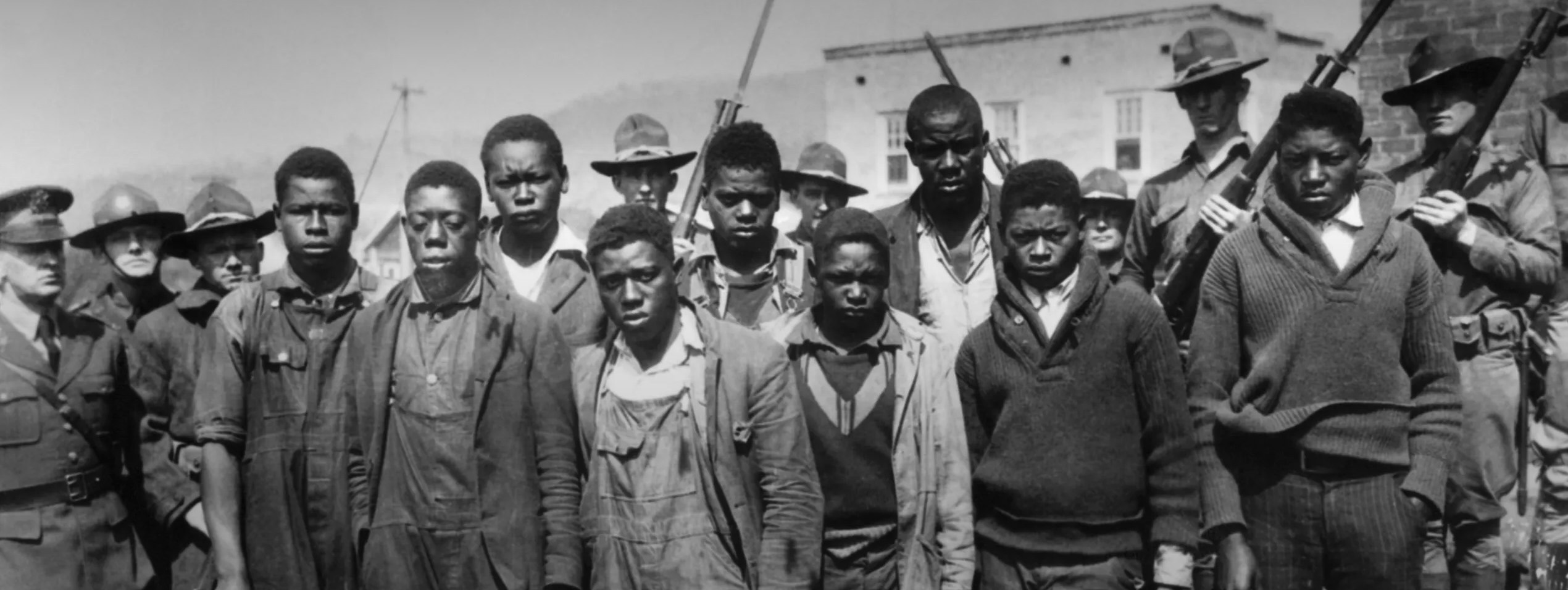In March of 1931, nine Black youth traveled on a Southern Railway train headed for Memphis, Tennessee. Crossing into Alabama, a vicious fight broke out between Blacks and whites who had hopped the train. After decidedly on the less fortunate side of the excursion, the whites got off of the train and shortly after filed a complaint with authorities.
Following the complaint, the local sheriff made an attempt to stop the train in Scottsboro, but narrowly missed the window to do so. Near Paint Rock, an armed posse of townsfolk forced the Blacks from the train. Upon inspection, they found two women disguised as men, Victoria Price and Ruby Bates, and another male on the train.
The women falsely claimed that they had been assaulted by the nine Black youth on board. Immediately, the youth were arrested, tied with plow line and taken to the Scottsboro County Jail, where a lynch mob gathered. Charges were brought quickly despite evidence from the doctor’s exam to prove the assaults had not occurred.
Tensions rose to an impressive height in the city and within less than two weeks of their arrest, the nine known as the Scottsboro Boys (referring to the town where the original cases were heard) were tried and convicted. All were sentenced to die by electrocution on July 10, 1931, except the youngest, a boy of only 12 years old named Roy Wright, whose case concluded in a hung jury.
Following the decisions, The National Association for the Advancement of Colored People (NAACP) and The International Labor Defense (ILD) came to the aid of the young men which resulted in a ruling in the United States Supreme Court, Powell v. Alabama, that “all defendants were entitled to adequate legal counsel during a capital felony.”
A change of venue was granted and moved the remaining trails taking place between 1933-1937 fifty miles away from Scottsboro to Decatur. A small city along the Tennessee River, Decatur boasted a population of roughly 16,000. In March of 1933, Haywood Patterson stood trial as the first of the boys before Circuit Judge James E. Horton. Alabama Attorney General Thomas Knight served as prosecutor. With funding from the ILD, high-profile New York lawyer Samuel Leibowitz served as lead attorney for the defendants.
Leibowitz made the case that the boys could not receive a fair trial because others of their race had been “systematically excluded from jury rolls.” Leibowitz met with influential men within the Old Town Community who provided him with several lists of black citizens whom they deemed qualified to serve as jurors. Men from both Jackson and Morgan Counties were called in to testify. It was concluded by all, including jury commissioners, that no black citizens had served on the petit or grand jury.
Judge Horton rejected the motion to quash. Leibowitz’s argument went on to set the precedence for the second ruling of the United States Supreme Court, Norris v. Alabama, which included black citizens on jury rolls.
Victoria Price made an appearance during the retrial and gave an emotionally charged testimony about the supposed encounter. While the evidence of innocence was overwhelming, Patterson was convicted once again. Judge Horton went on to set aside the verdict. Five of the boys received “nol pro,” or “a formal notice of abandonment by a plaintiff or prosecutor all of or part of a suit or action.” Four were released and ordered never to return to Alabama. The remaining Scottsboro Boys saw prison sentences and were later paroled or released.
In April of 2013, Governor Robert Bentley signed historic legislation exonerating the nine Scottsboro Boys and posthumously pardoning Haywood Patterson, Charlie Weems, and Andy Wright.
Scottsboro Boys Civil Rights Museum
With an important and fascinating history to share, the Scottsboro Boys Civil Rights Museum, in Decatur, Alabama is designed to “house, display and depict Decatur’s role in the historic trials of the Scottsboro Boys, while also reflecting the civil rights struggles, perseverance, and victories during that era.”
The project consists of 3 phases. Phase 1 includes renovation of the Boarding House where accuser Ruby Bates stayed during the Decatur trials. Phase 2 is the addition of a multi-million-dollar expansion adjacent to Phase 1. Phase 3 is the relocation of the home of Judge James E. Horton (presiding judge of the Scottsboro Boys Trials) to Old Town Decatur in the museum area. The House will serve as a Legal Center highlighting the heroism and courage of Judge Horton during the Scottsboro Boys Trials while offering various programs to enhance healthy community engagement and relations.




